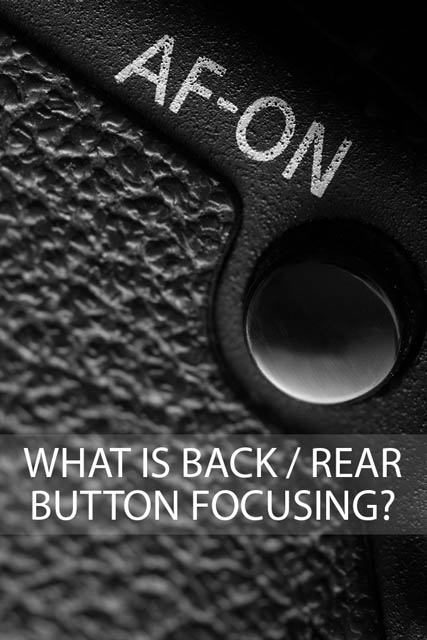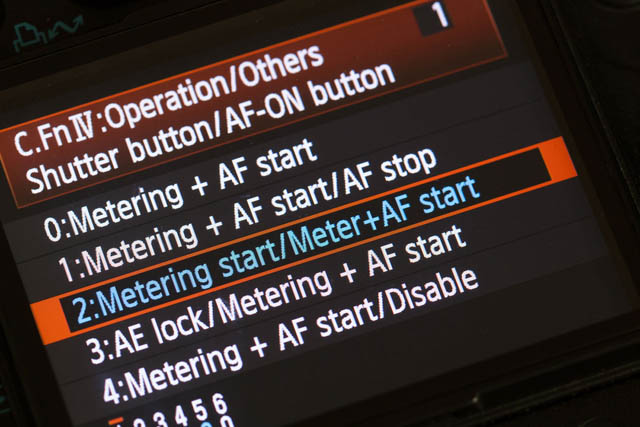What is back / rear button focusing?
Back button or Rear button focusing is a method of autofocusing used by many photographers. It decouples the autofocus from the shutter button, so a separate button on the back of the camera is used for focusing, while the shutter button is just used for taking photos.
In this article we'll look in more detail at the back button focus method. We'll cover why many photographers prefer this method over the standard half-press of the shutter button for autofocus. And also cover some situations where it doesn't work so well.
Why use back button autofocus?
There are two main reasons for using back button focusing: to avoid refocusing issues when using the focus-recompose technique or taking a panorama; and to allow quickly switching from single shot to continuous autofocus.
Back button AF and focus-recompose
The focus-recompose technique refers to a technique where you point your camera straight at your subject and focus. Then, keeping the focus locked, you move the camera to the desired framing, with the subject off-center.
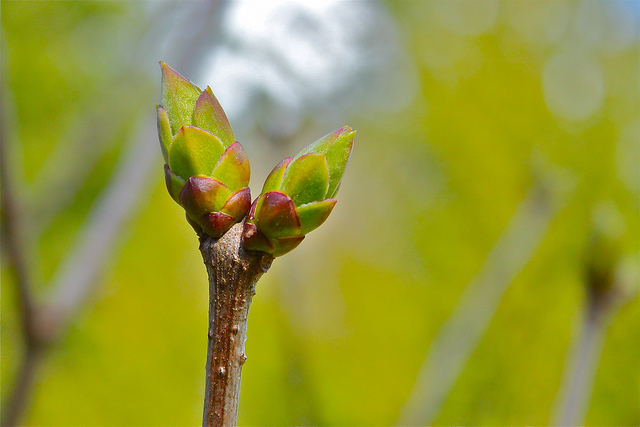
SPRING!!! by Boring Tales on Flickr (licensed CC-BY)
With the standard focusing setup, this means that you have to half press the shutter button while pointing the camera at the subject to focus. Then keep the button half pressed while you recompose, until you fully depress it to take the photo. If you accidentally lift your finger a little when trying to keep the shutter half-pressed, you'll loose the focus lock and have to start again.
If you accidentally press the shutter down too hard while trying to keep it half-pressed, you'll take an unwanted photo and have to start again.
If you want to take multiple photos of the same static subject, from the same distance, using the focus-recompose technique, then you need to focus and recompose for each photo.
With the rear button autofocus technique you don't have any of these problems. You just press the back button to autofocus, release it, and focus is locked. You don't have to worry about keeping the shutter button half-pressed or having to refocus for each shot. Focus will stay locked.
Keeping focus locked for a panorama
When taking images to be stitched together into a panorama, the images should have the same exposure and focus point. Otherwise they won't be able to be blended together properly.
With back button autofocus you can focus once for the first frame, then the focus will stay locked for the following shots. Whereas with half-pressing the shutter for autofocus, you have to make sure you're always focusing on a point the same distance away from the camera for each frame. While that's not normally not a big problem, it's easier with back button AF to ensure that the focus definitely will be the same for each frame.
Instant switching of focus modes
Having autofocus assigned to a button on the back of the camera rather than a half press of the shutter allows you to easily switch focus mode without having to actually change the focus mode setting each time.
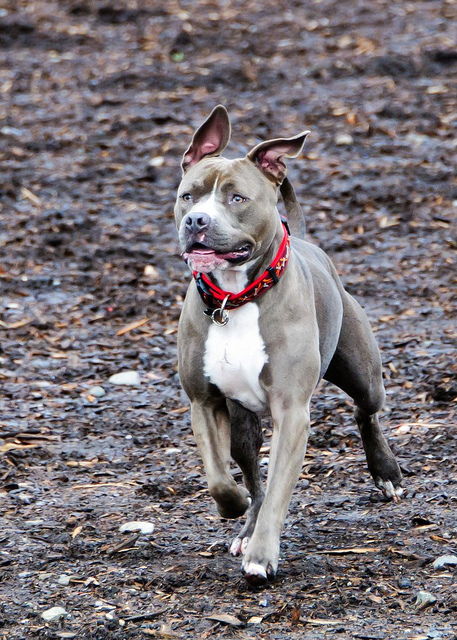
_DSC6145 by jimapics on Flickr (licensed CC-BY-SA)
The key is to set your camera's autofocus mode to continuous focusing (also known as AI Servo). Once this is done, you can hold down the back button for continuous autofocus. A single press of the back button will perform a single shot autofocus. Or by not pressing the back button and using the focusing ring on your camera's lens, you can use manual focus.
This allows you to switch very quickly from one focus mode to another, because you don't have to actually change any settings. You just change whether you keep the back button held down, single press it, or don't press it at all. Whereas normally you'd have to flip a switch or press a button and scroll through some options to change the focusing mode.
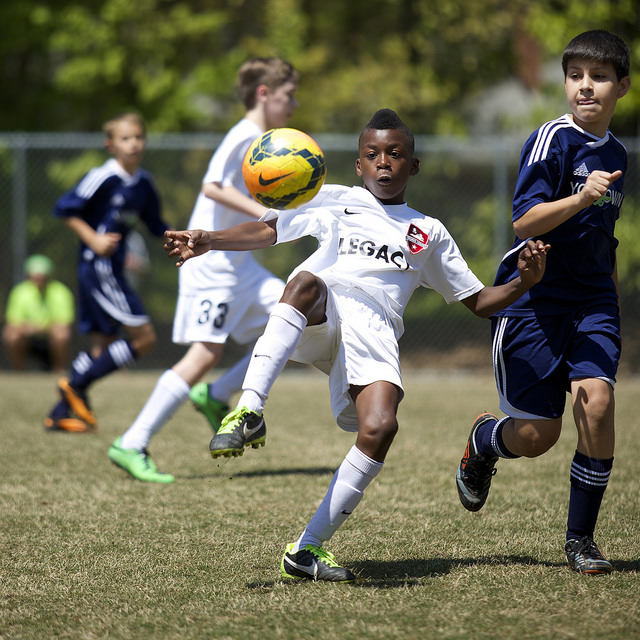
Learning to Shoot Soccer: April 2014 by Bil Kleb on Flickr (licensed CC-BY-SA)
This is why many Sports and Wildlife photographers prefer back button autofocus. They can just single-press the back button to focus when a subject is standing still. Then as soon as the subject starts moving, they can keep them in focus by holding down the button. There's no time lost in having to change the focus mode setting.
This video does a great job of explaining some of the benefits of back button autofocus and how it works in practice:
You may be wondering why you can't do the same thing with the half press of the shutter used for autofocus, and the focusing mode set to continuous. You can to some extent, but there are some issues that are solved by using the back button focusing technique.
With autofocus on the shutter half-press and autofocus set to continuous, then you can't use the focus-recompose technique. When you recompose the focus point will be moved away from the subject, and the camera will refocus on whatever is under the focus point. This issue doesn't exist when using back button focusing for static subjects.
The other issue that back-button focusing solves is if items are coming between you and a static subject. For example, other players running in front of the static player you're trying to photograph at a sports game. Or people in the crowd in front of you waving their hands in the air when photographing at a concert.
With autofocus assigned to the shutter and continuous focus mode, then if you have the shutter-half pressed to lock focus and something moves between you and the subject, the camera will adjust the focus to focus on the nearer item. With back button AF, you just press to focus on your subject and release the button to lock focus. Now if anything moves between you and your subject, the focus will stay locked on your subject until you focus again.
Faster for multiple shots of a static subject
When taking a photo of a subject that is not moving, you can just press the back button once to autofocus. Then for each shot after this, so long as you and the subject don't move, you can be sure that the subject is in focus.
When you press the shutter button to take a photo, you don't have to wait for the camera to autofocus. The time between pressing the shutter and the photo being taken will be faster compared to when you are using the shutter button for autofocus.
Setting your camera to use rear button focus
Not all cameras have the ability to use back-button focusing. However, the majority of DSLRs do have this functionality available. Some cameras have a dedicated button (usually labeled AF-ON), others allow you to repurpose another button as the autofocus button.
To set your camera to use back button focusing, you need to set a button on the back of the camera to perform autofocus. And you also need to set the half-press of the shutter button not to perform autofocus.
The way to set up your camera for rear button focusing varies between different camera models, so unfortunately I can't really list how to do it with every camera model there is. Instead, I would suggest just searching the web for 'camera model back button focus' (where camera model is replaced with the model name of your camera).
Searching the web will give you the instructions much faster than looking at your camera's manual. Most camera manuals are good at explaining what each available setting does, but are unlikely to have a specific section on setting on rear-button focusing.
With some camera models, you'll find that you can assign autofocus and autoexposure together to the back button. This would mean that the camera also calculates the exposure settings when you press the back button to focus. Or you can assign only autofocus to the back button, and leave autoexposure assigned to the half-press of the shutter.
If you are using a focus-recompose technique and also using spot or center-weighted metering, then setting the back button to also perform autoexposure is a good idea. This means that the exposure settings will be calculated based on the area that you focused on, not the area that is under the active focus point at the time the photo is taken.
On the other hand, if you're photographing in changing light, then having autoexposure assigned to a half press of the shutter might make more sense. If you press the rear button to focus when it's bright and sunny, but then take a photo when it's cloudy, the autoexposure will be calculated at the time you press the shutter button. So the camera will calculate the exposure correctly based on the current lighting conditions, not the lighting when you pressed the back button to focus.
When isn't back button AF the best choice?
Changing focus point quickly
If you change your focus point a lot, then using a rear button to control autofocus rather than the shutter may not always be the best choice. The reason for this is that you typically use your thumb to press the button and rotate the dial used for setting the autofocus point.
That means that after changing the focus point you have to move your thumb back up to the rear focusing button to get the camera to focus. But with autofocus assigned to the shutter button, you can use your index finger to start focusing as soon as you've chosen the focusing point with your thumb.
The time taken to move your thumb to the rear AF button isn't massive, and for many situations it wouldn't make any difference in terms of 'getting the shot'. But for some photographers it could cause a problem.
No AF-Assist light
If you have your camera set to continuous autofocus, (as suggested earlier), then you should be aware that the autofocus assist light on your camera / flash probably won't work. This isn't a big issue in itself, and many photographers prefer to have the autofocus assist light turned off all the time anyway. (The AF-Assist light is a light on the camera or flash that lights up nearby subjects when shooting in low light, to help your camera autofocus.)
However, it is worth being aware of. Otherwise you could be left wondering why the autofocus assist light on your camera isn't working, and it's just down to being in continuous focusing mode.
Asking someone else to use your camera
Cameras are set by default to use the half-press of the shutter button to focus. The majority of people have no experience with using a back button for focusing, they expect to just have to press the shutter button, and then get a focused and properly exposed image.
So if you have your camera set to rear button AF, then hand it to a non-photographer to take your photo, it could be a bit tricky. Either you'd have to try and explain how to use it, or set the camera back to using the shutter for autofocus before handing the camera over.
Again, not a big problem. You're not likely to be constantly handing your camera to strangers to photograph with. But something to be aware of.
Using the rear button for autofocus will take some time to get used to. And it's not for everyone - some people will still prefer the half-press of the shutter for autofocus. But it's certainly worth giving it a go to see how useful it can be for you and your photography.
